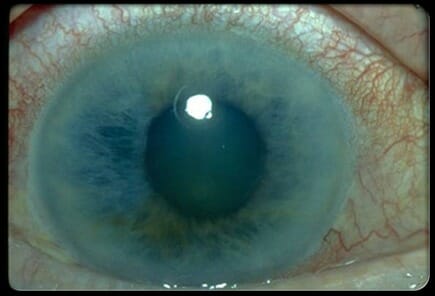January 2015: Stay Aware of Glaucoma

Glaucoma is a disease of the eye, resulting from excess fluid and pressure buildup between the iris and cornea. The trapped fluid and tension increase is referred to as intraocular pressure and compromises the optic nerve, or the part of the eye that transmits images to the brain.
Named by experts as a muted sight stealer, glaucoma typically presents minimal symptoms, if any, and causes irreversible damage, which can lead to blindness. In fact, glaucoma is the principle cause of preventable blindness in the United States, as well as the second leading cause of blindness overall. Close to 3 million people over age 40 in the U.S. have glaucoma, and according to the National Eye Institute, that number is expected to increase 58 percent by 2030.
Glaucoma isn’t just a national concern — at least 60 million people throughout the world have the disease. Figures from the World Health Organization indicate that as many as 4.5 million cases of blindness worldwide are a result of glaucoma.
Glaucoma Symptoms
Glaucoma can be difficult to detect based on symptoms alone. In fact, the most common form of glaucoma, open-angle glaucoma, often presents no symptoms before the damage has been done and eyesight has been lost. Symptoms that may point to glaucoma include loss of peripheral vision, seeing halos, and tunnel vision. A noticeable increase in pressure around the eye, while rare, is another possible symptom of glaucoma.
Glaucoma Disorder Types
While there are a number of different forms of glaucoma, the two chief types of the disease are open-angle glaucoma and angle-closure glaucoma.
Most cases of glaucoma, upwards of 90 percent, are diagnosed as open-angle glaucoma. Also known as primary glaucoma, open-angle glaucoma results from fluid drainage canal congestion, which intensifies pressure, causing a slow deterioration of the eye with minimal symptoms along the way.
Angle-closure glaucoma progresses rapidly. Intraocular pressure from the clogged drainage canals builds quickly, which closes the angle between the iris and cornea and damages the optic nerve. Because of the acute nature of this form of the disease, angle-closure glaucoma is easy to detect, as symptoms develop quickly and medical care is necessary.
Less common forms of glaucoma include irido corneal endothelial syndrome, congenital glaucoma, normal-tension glaucoma, pigmentary, traumatic, and neovascular glaucoma, among others.
Glaucoma Risk Factors
Since the symptom checklist for glaucoma doesn’t offer many clues as to the presence and progression of the disease, risk factor awareness is key. Those over the age of 60, as well as those of Hispanic, Asian, and African ancestry are at higher risk for glaucoma. Genetic history, diabetes, and nearsightedness can also increase risk.
Glaucoma Treatment
Treatment for glaucoma may consist of medications, eye drops, laser surgery and other surgical procedures to reduce and control the pressure on the optic nerve. Since early detection is key to managing the progression of the condition, regular annual eye exams are crucial, especially among those at increased risk.
Help Build Awareness and Find a Cure
Raising awareness and working toward a cure are the best defense against glaucoma and reducing the occurrence of preventable blindness in the United States. Those with glaucoma should alert and educate friends and family members, as well as encourage their loved ones to have their eye health and vision evaluated annually by a qualified ophthalmologist.
Visit the Glaucoma Research Foundation for a free informational booklet to learn more about the disease and to get involved. The foundation also accepts donations for those interested in helping fund the cause and find a cure.
[Photo Credit: MedicineNet]

